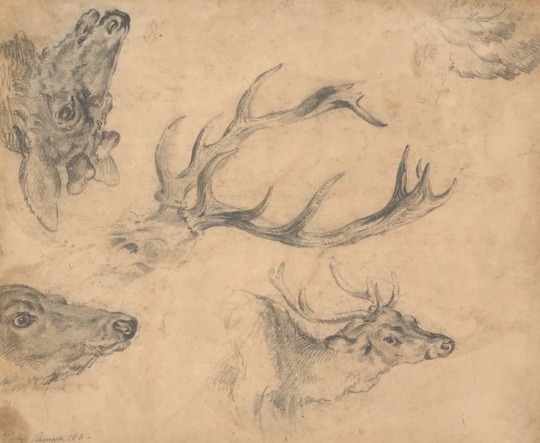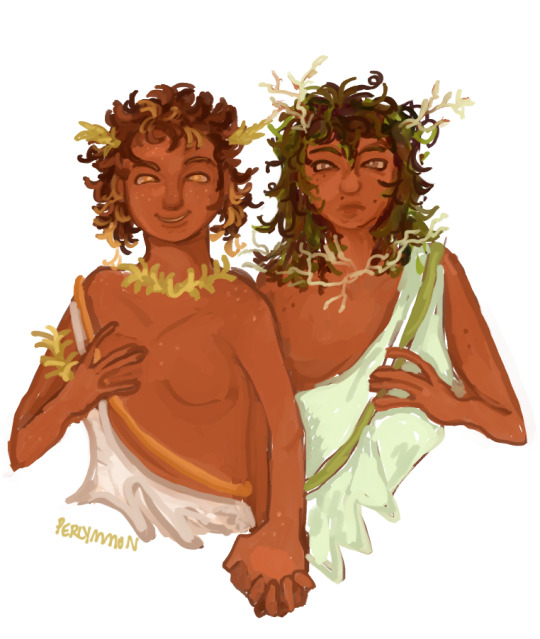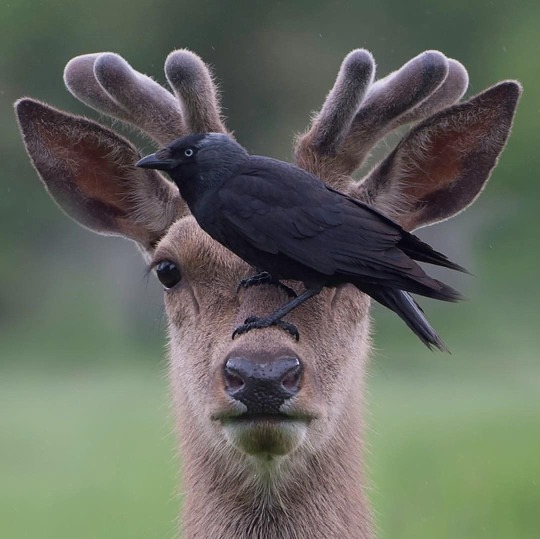#artemis deity
Text






More pictures that remind me of Lady Artemis.
#hellenic pagan#hellenic polytheism#hellenic religion#hellenic polytheistic#hellenic reconstructionism#hellenic revivalism#hellenismos#hellenism#paganism#artemis#artemis worship#artemis devotion#artemis devotee#lady artemis#artemis deity
26 notes
·
View notes
Text
When you step into sunlight, you honor Apollo. When you admire the moon, you honor Artemis. When you admire cloud shapes, you honor Hera. When you smell petrichor, you honor Zeus. When you laugh at a joke, you honor Hermes. When your body twitches to dance at a particularly upbeat music, you honor Dinoysus. When you enjoy the first bite of your breakfast, you honor Demeter. When you choose your peace over any conflict, you honor Athena. When you warm yourself up by sheltering yourself in blanket, you honor Hestia. When you listen to Ocean sounds, you honor Poseidon. When you smell flowers, you honor Persephone. When you admire the coolness of first day of Autumn, you honor Hades. When you wear your favourite jewellery, you honor Hephaestus. When you smile, you honor Aphrodite. When you exercise, you honor Ares. When you light a torch in a dark room, you honor Hekate.
Your body is a shrine to Gods, your being an act of devotion for them. You, by yourself, are enough for them.
#hellenic polytheism#apollo deity#aphrodite deity#hellenic worship#hellenic deities#hellenic devotion#hellenic pagan#hellenic pantheon#hermes deity#dionysus deity#demeter deity#zeus deity#hera deity#hephaestus deity#ares deity#poseidon deity#hestia deity#artemis deity#athena deity#hekate deity#hades deity#persephone deity#hellenic gods#hellenic polytheist#hellenic paganism#hellenic polythiest#goddess aphrodite#goddess persephone#goddess hecate#hecate deity
3K notes
·
View notes
Text

Apollo and Artemis 🏹🌿✨
I really enjoyed to make this piece! I did the lineart traditionally and painted it digitally
This piece was based on an attic red-figure cup from the 4th century BCE

#ancient greece#greek gods#greek mythology art#my art#art#greek mythology#mythology art#mythology#apollo#artemis#ancient greek mythology#apollo deity#artemis deity#greek pantheon
1K notes
·
View notes
Text
Isn't it actually so beautiful that deities take the time to try and guide and teach us? How wonderful is it that they care for us so deeply that they'd share their wisdom, knowledge, and insight so freely? I think a deity's love is something to be cherished, and I cherish this. 🧡✨
#helpol#hellenic polytheism#hellenic pagan#paganblr#hermes deity#apollo deity#apollon deity#athena deity#dionysus deity#aphrodite deity#loki deity#and literally every other deity I worship#artemis deity#paganism#polytheism
1K notes
·
View notes
Text
A little appreciation for the domains of a deity that don't get much attention/recognition. I'm making this because I do think it would be lovely if the aspects mentioned below got more attention, and additions not mentioned are welcome so long as it's an obscure part of them. This was going to be just a few and then I got carried away and did the main Twelve Olympians
A little love for:
Apollon as the God of Foreigners (the Arcadian friendship's harmony with Hermes being the god of travelers/way-god couldn't be any louder)
Aphrodite as a Goddess of the Arts (anything love-themed falls to her by default)
Ares of Civil Order, Defender, and Of Courage
Artemis as the Goddess of Dancing and equal Leader of the Mousai
Athene as the Goddess of Carpentry, Metalwork, and Sculpting
Demeter as Friend of Peace and Law-Giver
Hephaistos as the one with a delicate touch that creates beautiful works of art (It isn't so much unknown but honestly the thing I love most and not the first thing one thinks of with his talents/image)
Hera as the Skillful Bender of Language, Bender of Oaths and Promises
Hermes, God of Peace/Diplomacy, Divine Protector of All, as well as a God of Poetry and Knowledge (rightfully the other half to Athene)
Hestia of the Earth, Earth Dwelling and Delighting in the Works of Man, The One That Made Buildings
Poseidon of Fertility, the Plant Nurturer, and Holder of the Earth
Zeus of the People, Gracious and Merciful, Of Refuge, Counsellor
#hellenic polytheism#hellenic pagan#hellenic gods#hellenic paganism#hellenic polytheist#helpol#apollon#apollo#apollon deity#aphrodite#aphrodite deity#ares#ares deity#artemis#artemis deity#athene#athena#athena deity#athene deity#demeter#demeter deity#hera#hera deity#hermes#hermes deity#hestia#hestia deity#hephaistos#hephaestus#poseidon
823 notes
·
View notes
Text
Hey there. Normalize unconventional divination or worship. Just because it's not in a book or an article does not invalidate what helps you.
Is your relationship with your deity different from other practitioners? Who cares. It's your personal journey. This isn't an organized religion, you have the ability to pace yourself, think outside the box and learn what works for you as an individual.
#hellenic polytheism#loki deity#norse heathen#apollo deity#lord apollo#artemis deity#lady artemis#baby witch#pagan witch#witchblr#letters to my youngrr self
715 notes
·
View notes
Text

twins, younger
669 notes
·
View notes
Text
Dissecting ancient Greek wedding customs (or “How to adapt the clusterfuck they are into something somewhat doable for the 21st century”)
This post is going to be a bit different. I could stick to writing about the customs we know of from a purely historical perspective, and while it would be informative, it wouldn’t reflect what I’ve actually been up to. Some of you might already know, but I’m getting married, so I approached this topic with the intent of seeing what I could do (and get away with).
So this post is going to be more about method and the practical challenges that come with doing the groundwork of adapting very old (and often outdated) traditions in a way that makes sense for our modern times.
I do have some disclaimers to make before I get started:
Most (if not all) of the literature around ancient Greek marriage is hetero-normative. However, this does NOT mean that marriage rites shouldn’t be adapted for queer marriages or that queer marriages can’t be done within Hellenic paganism. It’s our job as reconstructionists and revivalists to rework and adapt to our needs.
Similarly, this post is bound to mention or detail cult practices that are no longer in line with our modern sensibilities. I also want to make it clear that this post is not a tutorial. I’m not saying how things should be done, I’m only exposing elements that I consider reworkable and propose suggestions so that it can help others make their own research and decisions, with the level of historicity that they deem fit.
While the wedding customs from fifth century BC Athens are decently known, the ones from other cities and regions of Greece are much more obscure outside of anecdotal and fragmentary details (with the exception of Sparta). For this reason, the Athenian example is what I’ll be using as foundation. If you reconstruct practices from other areas of the Greek World, you might find something valuable in this article: The Greek Wedding Outside of Athens and Sparta: The Evidence from Ancient Texts by Katia Margariti.
Basic/simplified structure
The typical Athenian wedding would spread over three days, and be marked by several steps, some of which are listed below. Note that the order of these steps is not precisely known and might have been flexible:
Pre-wedding:
Decorating: korythale at the door, decoration of the nuptial bedroom
The Proteleia
Filling of the loutrophoros
Wedding day
Nuptial bath
Adornment of the bride
Wedding Feast
Hymenaios
Anakalypteria
Nymphagogia
Katachysmata
Day after
Epaulia
Gamelia
Final sacrifices
Some of these steps included specific customs and traditions, not all of which are reconstructible for various reasons.
Decorations
The korythale: the korythale was a sprig, usually from an olive tree (or laurel), which was placed at the groom’s door (and perhaps the bride’s too). The word in interpreted as deriving from “koros” and “thallein”, which would translate “youth-blossom”.
The korythale is very reminiscent of the eiresione, which was a similar kind of branch of laurel used during the Thargelia and/or the Pyanepsia that had apotropaic purposes. Athenian weddings included a procession from the bride’s home to the groom’s house, so the presence of the korythale at the doors would indicate that a wedding was taking place involving the decorated homes.
While I haven’t seen any one make this interpretation, I would still be tempted to argue that decorating the thresholds of houses has a similar protective and luck-bringing purpose than the eiresione, which was also hung above the door of Athenian houses.
The thalamos (nuptial bedroom): While there is no doubt the houses were properly decorated for the occasion, we have mention of special care given to the nuptial bedroom.
It’s important to understand that the procession from the bride’s house to the groom’s went up to the bedroom door, it was generally an important location and its preparation is seen represented on ancient pottery. Euripides mentions the adornment of the bed with fine fabrics, while Theocritus mentions the smell of myrrh (sacred to Aphrodite). There is also evidence that, in the Imperial period, the practice of hanging curtains to create a canopy above the bed was adopted, very likely from Egypt.
When it comes to adapting this today, it is pretty straightforward and there is plenty of room for personalization. The korythale could be challenging depending on how easily available olive or laurel are in your area. I would also argue that the custom could be more loosely adapted so that instead of being at the houses’ doors, it could take the form of a floral arrangement at the door of whatever venue you are using.
Proteleia
In short, the proteleia refers to sacrifices and offerings that would be made to various gods before the wedding. The exact timing of these is more or less unknown, but we have reasons to believe they could be done a day or a few days before the wedding, and perhaps also on the day of the wedding. These offerings were made independently by each family.
It is in this context that the offering of a lock of hair and of childhood items is best known for brides. The recipients of the offerings are varied: In Athens the most mentioned are the Nymphs and Artemis, but various sacrifices to Aphrodite, Hera, Athena and Zeus were also performed. In other parts of Greece, pre-nuptial customs often included sacrifices to local heroines. Plutarch, in the 2nd century AD (and therefore way after the focus of this post) mentions the main five nuptial deities to be Zeus Teleios, Hera Teleia, Aphrodite, Peitho and Artemis.
Today, I believe the exact choice of who to offer to and what to offer very much comes down to personal preferences and circumstances. While we assume that both families made prenuptial sacrifices, we know very little of the groom’s side of things, since the focus was on the bride, and the rite of passage aspect was not present for the groom in Ancient times. This is a gap that leaves room for modern innovation eg. including Apollon to either replace or accompany Artemis or choosing a group of deities that is more couple-centric rather than family-centric.
Personally, I have settled on Aphrodite, Hera and Artemis and have integrated a Spartan custom that includes the mother of the bride in the sacrifice to Aphrodite. Hera Teleia will receive a lock of my current hair, while Artemis will receive a lock of hair from my first haircut as a child (that my mother has kept all these years), alongside some other trinkets. The groom will honour Zeus Teleios in a passive way. And I will honour the Nymphs through the the rite I will explain next.
Nuptial baths
Both bride and groom had a ritual bath before the wedding. Its purpose was of cleansing and purificatory nature, and is consistent with other water-based pre-sacrifice purifications. What made the bride and groom's baths distinctive was their preparation. The bath water used to be drawn at a specific spring or river. At Athens, the water for bridal baths came from the Enneakrounos, the fountain house for the spring Kallirrhoe, but each city had its dedicated source. The water was carried in a special vase named the loutrophoros (bathcarrier) and the act of fetching the water and bringing it back to the homes constituted a procession. The loutrophoros was often given as offering to the altar of the Nymphs after the wedding. It was an important symbol of marriage, to the point that, if a woman died before being married, she would often be buried with a loutrophoros.
This will be more or less difficult to adapt depending on circumstances and environment, but the logic of a purifying bath (or shower even) can be kept (though I would discourage bathing in water you are not sure of the cleanliness of). The idea of having a specific vessel can also be kept. Personally, I plan to have a special vessel for some type of purified water, and while I may not bathe in it, I plan to sprinkle it and/or wash my hands with it.

Adornment of the bride (and groom)
Traditionally, the bride would have a nympheutria (which we could equate as a bridesmaid, but seems to have often been a female relative) charged of helping the bride get ready. I won’t get into the details of the clothing we know about, mostly because there seems to be a lot of variation, and because I consider this to be a very personal choice. However, we can note that both groom and bride were adorned with a wreath or a garland of plants that were considered to have powers appropriate for the occasion (sesame, mint, plants that were generally considered fertile or aphrodisiac). Perfume is also something attested for both bride and groom, especially the scent of myrrh. The bride would wear a crown, the stephane, which could be made out of metal or be vegetal (the stephane is now the object of its own crowning ceremony in Greek Orthodox weddings). The bride’s shoes were also particular for the event, and named nymphides. The bride’s veil was placed above the crown.
Hymenaios and Feast
I am grouping these two since they are linked. The feast was more or less the peak of the wedding ceremony and lively with music and dances, as Plutarch indicates (Moralia, [Quaest. conv.] 666f-67a):
But a wedding feast is given away by the loud cries of the Hymenaios and the torch and the pipes, things that Homer says are admired and watched even by women who stand at their doors.
The hymenaios was a sung hymn in honour of the couple and the wedding, and there were other songs that were specifically sung at weddings. However the hymenaios wasn’t only for the feast, these songs would be sung also during the processions. The hymenaios also had the purpose of ritually blessing the couple, a ritual that bore the name of makarismos.
As for the feast, it was obviously abundant with food and the prenuptial sacrifices provided the meat that would be served. There is otherwise very little difference with what a modern wedding feast would be like: food, drink, music and dance around which gathered friends and relatives of the couple. Like today, the wedding cake(s) was an important part of the celebration. It was called sesame and consisted of sesame seeds, ground and mixed with honey and formed into cakes to be shared with the guests.
Anakalypteria
Note that there is a bit of a debate around this step, which is the unveiling of the bride. Some believe the bride kept her face veiled until this part of the wedding, where her face would be uncovered for the groom to see. Others interpret this step the other way around, where the bride is then veiled as a result of being now married. The timing of the unveiling is also up for the debate. It might have been during the feast (at nightfall), or after once the couple was escorted to the bridal chamber. There doesn’t seem to be a clear consensus.
The concept of unveiling the bride is otherwise something that isn’t unknown to us as a modern audience. As with everything else, how to interpret and modernize it is up to personal preference.
Nymphagogia and Katachysmata
The nymphagogia aka the act of “leading the bride to her new home” took place at night, likely after the feast. It is at this point that the groom ritually led the bride to his home by taking her by the wrist in a ritual gesture known as χεῖρ’ ἐπὶ καρπῷ (cheir’ epi karpo). The relatives and friends of the couple formed a festive procession that accompanied them to their new home accompanied by music and songs. The mother of the bride led the procession carrying lit torches, while the groom’s mother awaited for the new couple in their home, also bearing lit torches.
Once there, the rite of the katachysmata would happen. The couple would be sat near the hearth and the guests would pour dried fruits, figs and nuts over the bride and groom as a way to incorporate them into the household and bless the union with prosperity and fertility. As part of this rite, the bride ate a fruit (either an apple, quince or pomegranate). It is only after this step that the couple would be escorted to the bridal chamber.
These two rites are tricky to adapt in a modern context because of how location-specific they are (and that’s not even taking into account the implications of having family escort you to your bedroom etc). My take would be that the katachysmata is not too far off from the custom of throwing rice/flowers at the couple after the ceremony, and could probably be incorporated as such. The torches could also be replaced by any source of light placed in a meaningful location, depending on the where the wedding is being held. The nymphagogia could also do with an update, the easiest of which could simply be holding hands while leaving the wedding ceremony.
The day after (Epaulia, Gamelia & sacrifice)
The epaulia refers to wedding gifts to the couple, which would be given the day following the ceremony. At this point, it is implied that the couple has consummated their marriage and are officially newly-weds. Pausanias informs us that the term “epaulia” (also?) refers to the gifts brought by the bride’s father in particular and included the dowry.
After the epaulia, the bride's incorporation into her husband's house was complete. This might have been when the groom held a feast for his phratria (aka direct family), as a way to conclude the wedding.
As for final sacrifices, the bride herself may have marked the end of her wedding by dedicating her loutrophoros at the sanctuary of Nymphe, south of the Acropolis.
The epaulia could be adapted, in modern terms, with having a registry. Should someone choose to have a specific vessel linked to the ritual bath today, it could very well be kept, dedicated to the Nymphs and used as a small shrine. Considering how symbolic the object is, there is also room for it to become a piece of family heirloom.
Final words
This is really only a small summary of what a wedding could have looked like, sprinkled with a few ideas of how to manage the gaps, discrepancies and limitations. As I said in my introductions, there are details I haven’t mentioned. Some of the customs detailed here have clear modern counterparts, but others don’t. I’d like to conclude by addressing these.
First, the ancient Greek (Athenian) wedding is completely devoid of priestly participation. It was entirely planned, organized and led by the two families. Religious responsibilities were entirely self-managed. I find this point important to remember because it makes it much more accessible than if modern Hellenic pagans had to seek out an external authority.
Some of you might have noticed the absence of wedding vows, at least in a formal form like the one we are used to in our modern days (derived from Christian and Jewish traditions), this is not an oversight, there simply were none that we know of. As a sidenote, I would also advise against turning a wedding vow into a formal oath. I’m still debating on what to do myself, but I’m leaning towards a religiously non-binding vow that won’t curse me should things go wrong.
Adapting the structures and rites of the ancient wedding to today’s framework of ceremony will naturally lead to changing the order of things, on top of sacrificing elements for the sake of simplicity, practicality, personal preferences and, very likely, visibility. Unless you’re lucky enough to do a private elopement, chances are that relatives and friends might be there, and not all might know or even approve of your faith. I hope this post shows that there can be ways to include traditional religious elements that will go unnoticed to the untrained eye, like I hope it showed that the private nature of the ancient Greek wedding rites is a significant advantage for modernization.
#hellenic polytheism#hellenic paganism#hellenic pagan#heradeity#greek history#ancient greece#zeus deity#aphrodite deity#artemis deity#hellenic reconstructionism#wedding rites
739 notes
·
View notes
Text
Apollo: *crying* It was so hard! I couldn't take it man!
Artemis: *patting him on the back* Yeah life can be hard sometimes.
Apollo: Life?
#mod m#incorrect quotes#mythology memes#incorrect mythology#incorrect mythology quotes#greek mythology#greek mythology quotes#incorrect greek mythology#incorrect greek gods#greek gods#greek god#apollo#apollon#artemis and apollo#apollo and artemis#greek goddesses#greek goddess#artemis#artemis greek mythology#artemis deity#greek myths#ancient greek mythology#greek myth memes
504 notes
·
View notes
Text
Apollo and Artemis :3

#greek mythology#greek gods#apollo#artemis#artemis goddess#artemis deity#apollo and artemis#apollo greek god#apollo god#lady artemis#lord apollo#the divine twins
288 notes
·
View notes
Text

Here’s a more accurate representation of this year’s solar Eclipse! Artemis and Apollo are (hopefully) getting along well enough.
#artemis#apollo#artemis deity#apollo deity#sun#moon#solar eclipse#eclipse#art#artists on tumblr#drawing#greek mythology#tagamemnon#iliad#trojan war#the iliad#the odyssey#odyssey#greek gods#greek god#homeric epics#homeric hymns#olympians#olympus#sketches#sketch#doodle
176 notes
·
View notes
Text
Why is getting into worship so hard??
I think it’s honestly lack of direction and routine. While I love how free paganism is, it’s so easy to get lost especially with adhd. It’s the whole “so many possibilities that I can’t choose anything” thing yk
#artemis deity#deity#pagan#deity worship#deity work#paganblr#paganism#hellenic polytheism#hellenic pagan#hellenism
314 notes
·
View notes
Text
🌙 Subtle Artemis Worship 🦌
Spend time out in nature (e.g. go on a hike, take a walk outside, visit a nature preserve, etc.)
Dancing, especially at night and to music that makes you feel wild and free
Playing an instrument (although this is more for Apollo, I believe it also works as a form of Artemis worship)
Wearing jewelry that reminds you of her
Having imagery of deer, horses, or dogs around
Having literally any sort of animal symbolism around (she is a Goddess of Animals)
Investing in nature/animal conservation efforts (can simply be spreading the word if you can't afford to donate or volunteer)
Creating art of your favorite flower, plant, or animal
Keeping a picture of her in your wallet
Taking a walk outside during the crescent or full moon (only if it is safe in your area to do so)
Learning about self-defense (I feel dedicating a pocket knife, if legal, to her is a great idea)
Learning archery
Befriending neighborhood animals, such as cats, birds, or dogs; leaving food out for them
Lighting a bonfire with friends and having a good time together; dancing around it is especially great (please be safe about doing so; I don't recommend drinking first)
Star-gazing and moon-gazing
Showing compassion to others, such as through volunteer work or holding doors
Taking a warm bath at night
Having a candle that reminds you of her (no altar needed)
Wearing animal-inspired outfits or doing animal-inspired makeup
Visiting a local zoo, aquarium, or butterfly pavilion; taking the time to learn about new creatures
Watching nature documentaries or movies about animals (it can be movies/shows starring anthropomorphic animals)
Being curious about local fauna and flora
Learning how to safely forage for food, such as picking berries or mushrooms
Meditating in the dark of the night, especially on a crescent or full moon
Making a list of your goals; focus on completing these one step at a time
Taking new risks, especially ones that give you a sense of thrill and excitement
Sending kind messages to loved ones, especially those having a difficult time
Learning to prioritize your own well-being; taking care of yourself first and foremost
-
May add to this later! For now, this is my list of discreet ways to worship Artemis. I hope someone finds it helpful. Take care, everyone! 💚
Link to Subtle Worship Master list
#helpol#hellenic polytheism#hellenic pagan#artemis deity#artemis worship#deity worship#paganblr#pagan tips
252 notes
·
View notes
Text

Apollo and Diana by Giovanni Battista Tiepolo
"Muse, sing of Artemis, sister of the far-shooter, Parthenos the virgin who delights in arrows, who was fostered with Apollon.
She waters her horses from Meles deep in reeds, and swifty drives her all-golden chariot through Smyrna to vine-clad Klaros where Apollon god of the silver bow, sits waiting for far-shooting delighter in arrows.
And so hail to you, Artemis, in my song and to all goddesses as well."
- Homeric Hymn 9 to Artemis (trans. Evelyn-White)
#helpol#artemis deity#apollo#apollon#apollo deity#artemis worship#artemis devotion#apollo worship#apollo devotion#homeric hymns#hymns#hellenic polytheism#deity work#deity worship#polytheism#prayers#deity prayers#quotes#artwork#artemis
316 notes
·
View notes
Text


Created offering wallpapers for Artemis and Apollo using Pinterest’s Shuffles
239 notes
·
View notes
Text
Lady Artemis









Goddess of the hunt, the wilderness, wild animals, nature, vegetation, childbirth, care of children, and chastity.
Requested by @colorfulchaospeach
taking requests
#artemis devotee#devotee#greek gods#greek mythology#ancient greek#artemis deity#artemis worship#hellenic pagan#paganism#pagan#hellenic polytheism#hellenic polytheistic#hellenic devotion#hellenic polythiest#hellenic deities#hellenic gods#hellenic polytheist#hellenism#hellenic pantheon#lady artemis#artemis devotion#artemis#greek goddess
155 notes
·
View notes